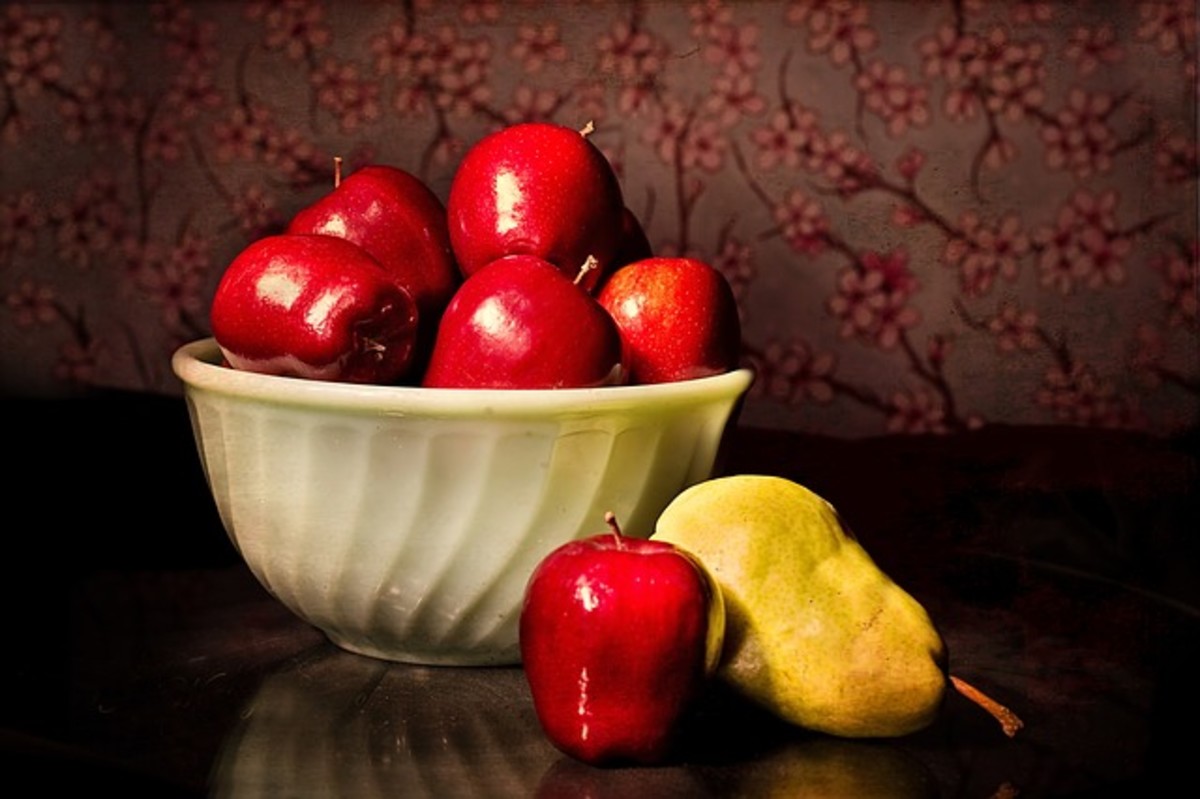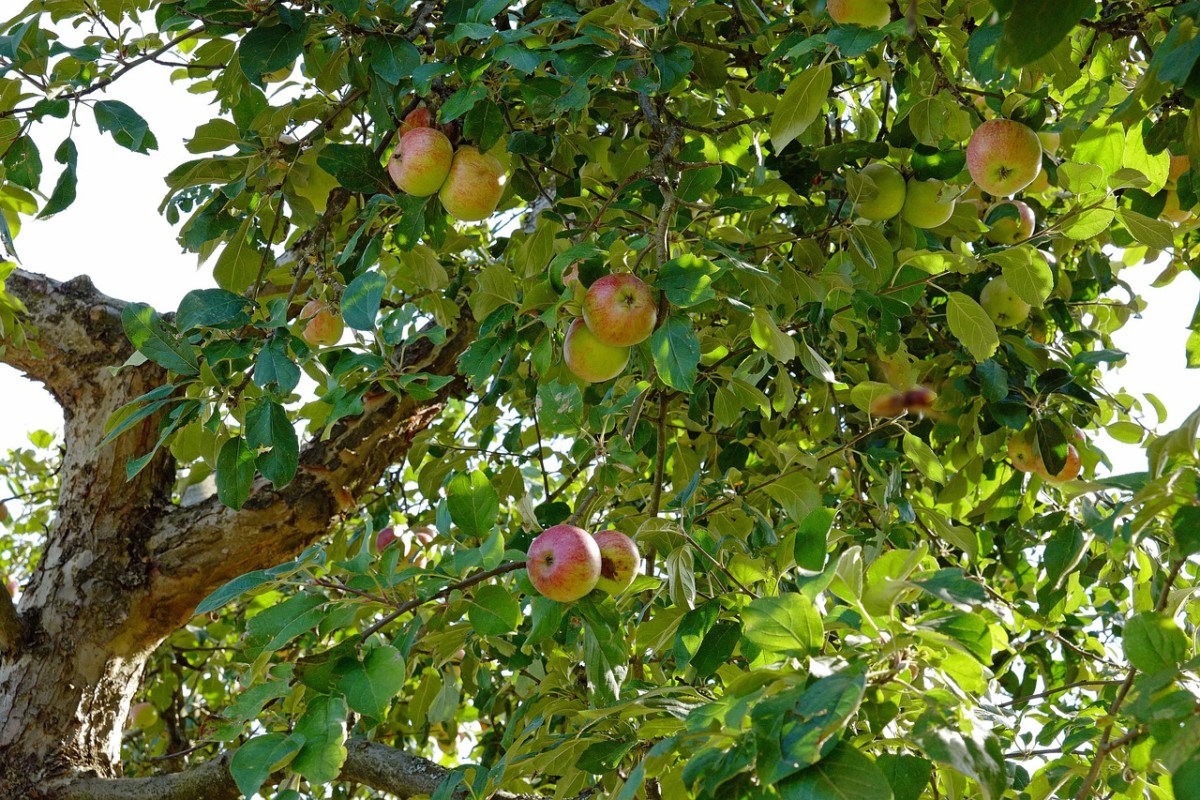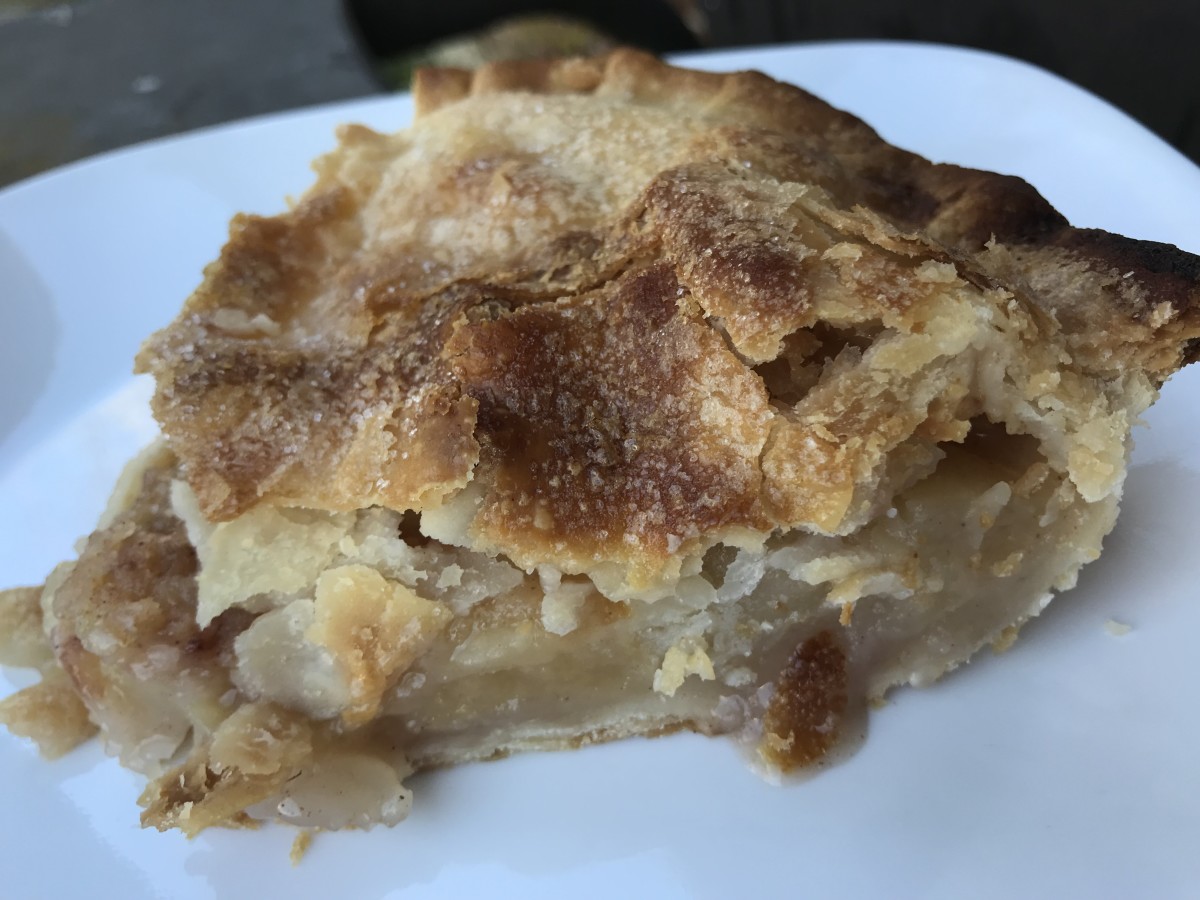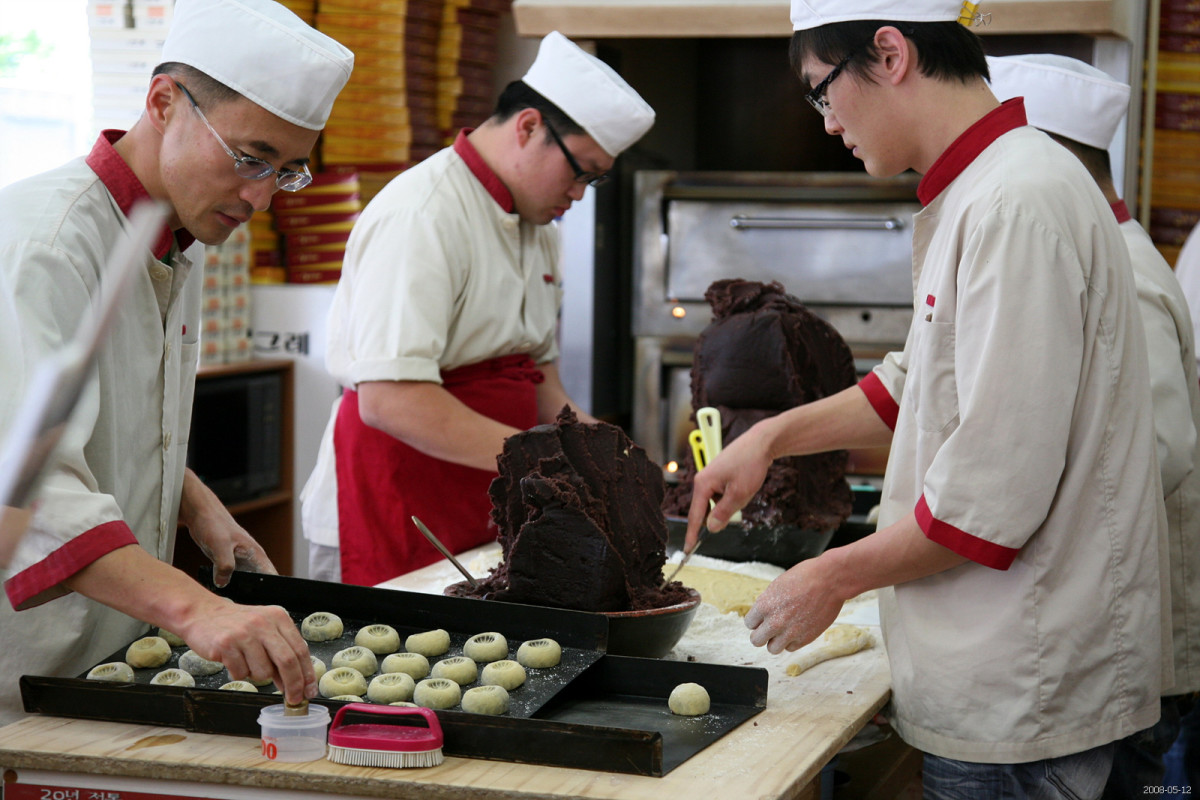Apples in Cakes and Desserts
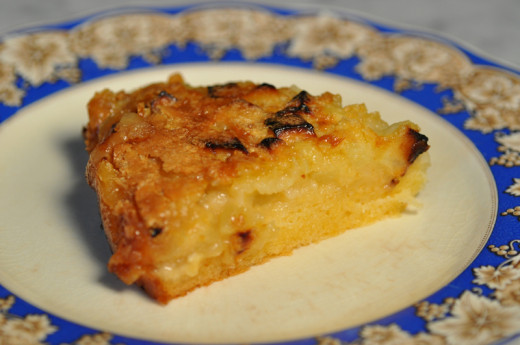
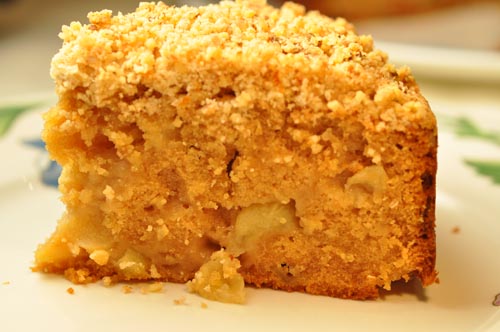
"Eat an apple on going to bed/and you'll keep the doctor from earning his bread ." This old Pembrokeshire proverb that takes the more mundane-sounding form of "an apple a day keeps the doctor away" probably stems from the age-old belief that apples promote longevity, if not immortality. This ancient myth is not totally off-with-the-fairies theory. Various research studies have found that consumption of apples has been associated with a reduced rate of heart disease, stroke and some cancers.
Immortality is a big ask of any fruit. What apples do guarantee is gastronomic heaven on earth, particularly when cooked. Cooking transforms their crisp, refreshing and palate-cleansing qualities into rich, complex flavours and luscious textures, whether it be in moist muffins or waistline-challenging desserts such as the glorious classic tarte Tatin - buttery puff pastry cushioning caramelised apples, served with a generous dollop of cream or ice cream to round it (and oneself!) off.
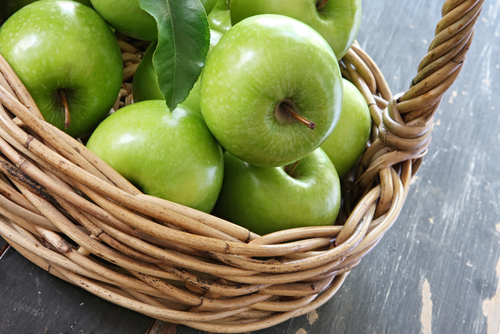
How to Choose Apples for Cooking
The categorisation of apples between cooking and eating varieties is a British practice: most apples can be used for cooking. The choice depends on flavour (sweet, sweet with a degree of acidity, sour - avoid insipid!) and shape-holding qualities on cooking. Some apples hold their shape very well, others disintegrate into a puree. Shape retention might not matter in an apple crumble or a soufflé but you don't want your beautifully arranged apple slices in a classic simple tart turning into mush on baking! The British term "cooking apple" refers to apples which have this latter propensity to turn into mush on cooking. This breakdown is due to a very high malic acid content and as such, "cooking apples" are often associated with a sour flavour.
My flavour preference when choosing apples for desserts and other baked treats is for flavoursome apples, with some degree of acidity. Some of the commonly available varieties include Golden Delicious which holds its shape well when cooked. However, this variety can be a little tricky to use as it can turn floury if it's a little old. Lady William, Pink Lady (a cross between Golden Delicious and Lady William) and Granny Smith are also good. Note: Buy the varieties that are in season. Whilst you will see common varieties of apples all year round in supermarkets, each variety actually has its own season, ranging from autumn through to early spring. Otherwise, you may be eating fruit that has been in cold storage for over a year! Hardly what you'd call fresh fruit!
There's been a global revival of heritage apples in recent years. Do look out for them at farmers' markets when in season. I love using varieties like Cox's Orange Pippin, Sturmers' Pippin and Blenheim Orange when these turn up at the market. [Some nurseries are also starting to sell these heritage varieties. I've got a few of these in giant sized pots in my small backyard. Despite being restricted in pots, they've provided pretty good yields although I have a running battle with the local possum as to who gets the fruit !]
Popular Apple Desserts
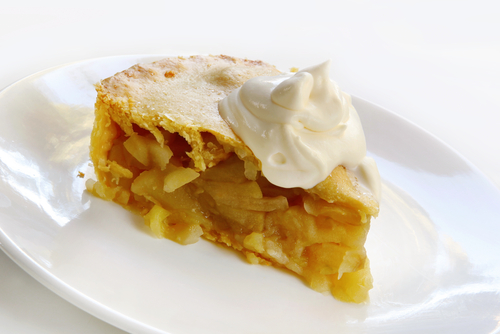
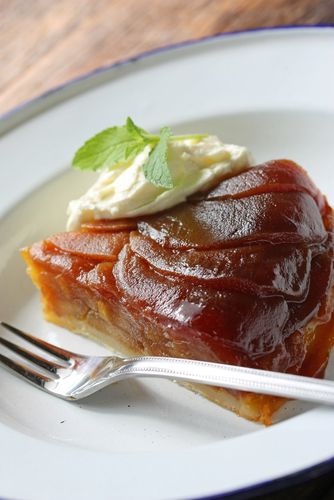
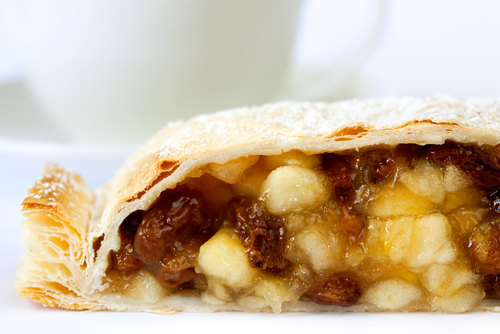
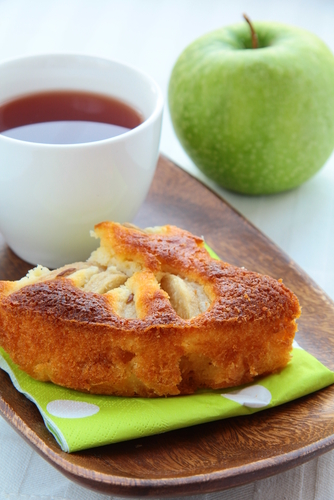
Ideas for Apple-based Desserts
Simple baked whole apples and buttered apples make wonderful everyday indulgences. Bake full-flavoured apples with the core left in - the pips add a lovely aroma to the flesh. Alternatively, for added flavour and texture twists, core them and stuff them with a mixture of sugar and butter, spiked with candied peel or a touch of spice like ground ginger, cinnamon or cardamom; OR with fruit mince, OR crushed amaretti biscuits.
Of the many variations on buttered apples, one delightful 18th century version is to toss diced apples in sugar and fry them in butter until golden sticky brown. Remove the apples. Add more butter to the pan and toss in some stale bread that has been cut into cubes about the same size as the apples. Fry the bread cubes until they are crisp. Then toss them with the apples and serve with cream.
Many classic apple desserts showcase the contrast of rich buttery, crisp textures against the luscious softness and sweet-acid flavours of the cooked fruit. Well-known examples are apple pie, the homely crumble (substitute ground almonds for part of the flour in the crumble mixture for a lovely nutty variation), strudel or its more elaborate French cousin, the croustade , as well as the aforementioned tarte Tatin . Always use good quality butter for best results.
Types of Sugar for Apple Desserts
There's a great deal of latitude in the type of sugar you use for apple desserts. By varying the sugar used, you can create entirely new flavour dimensions. Refined white castor sugar makes for pleasant simplicity. Billington's natural, unrefined molasses sugar introduces dusky complex flavours with baked apples or even tarte Tatin. Light or dark muscovado sugar or a mixture of both can be used for just about all apple-based treats, whether it's baked or fried apples, muffins, cakes or tarts.
I often play around with light and dark muscovado sugar for Apple Streusel Cake. I was recently given a packet of "Dulce Sugar", a really fragrant light golden sugar from Costa Rica. According to the blurb on the pack, this sugar "is made from unrefined sugar cane juice. It's processed in a way that preserves all the natural vitamins and minerals, resulting in a sugar that has a gentle honey sweetness, ovely notes of caramel and molasses, and a soft crumbling texture ". The cake pictured here is made with this sugar. It was delicious!!! Not very sweet, thus allowing the fruit rather than sugar to really shine through.
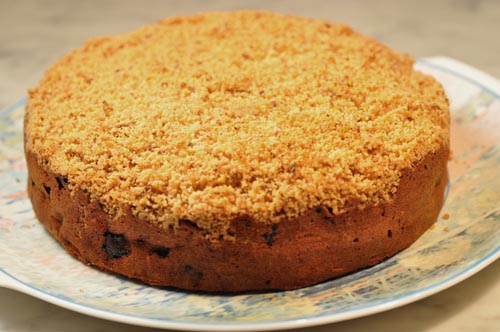
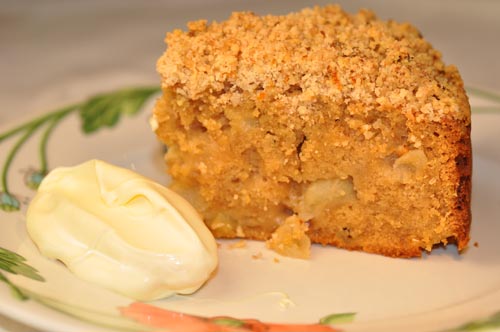
RECIPE: APPLE STREUSEL CAKE
500 g firm, crisp apples (eg Granny Smith)
6 tbsp orange juice
125 g unsalted butter, softened
150 g light brown sugar
2 x 60 g eggs, lightly beaten
Finely grated zest of 2 oranges
½ tsp vanilla extract
250 g self-raising flour
Pinch salt
Streusel Topping
25 g chilled butter, cut into small cubes
50 g plain flour
25 g Demerara sugar
50 g finely chopped toasted walnuts (you can also use pecans or almonds)
grated zest of 2 oranges
generous pinch ground cinnamon
Grease and line a 20- cm springform cake tin with baking paper.
Peel, core and cut the apples into a coarse dice. Toss the diced apple in the orange juice.
Cream the butter and sugar until pale and fluffy. Beat in the eggs, then the orange oil or zest and vanilla. Sift the flour together with the salt. Fold into the butter mixture. Mix the apples, including the juice, into the batter. Pour into the prepared tin, levelling the top.
For the streusel topping , pulse the butter and flour together in a food processor until the mixture resembles fine breadcrumbs. Mix in the rest of the ingredients, then sprinkle the topping evenly over the cake.
Bake in a preheated 170ºC oven for about 1 ¼ - 1 ½ hours until the topping is golden brown and a cake skewer inserted in the centre comes out clean. Allow to cool on a wire rack for 15 minutes before turning out.
Serve warm with cream.
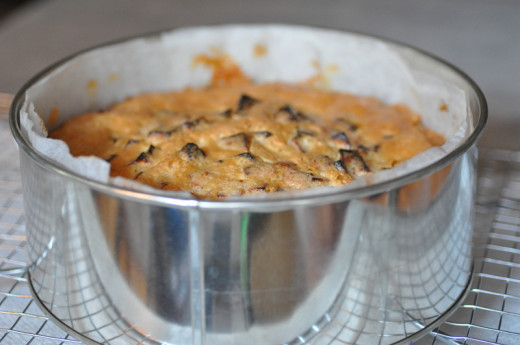
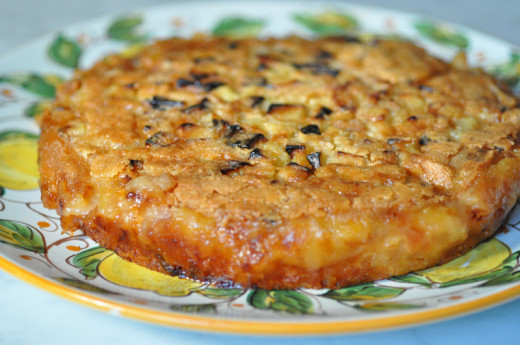
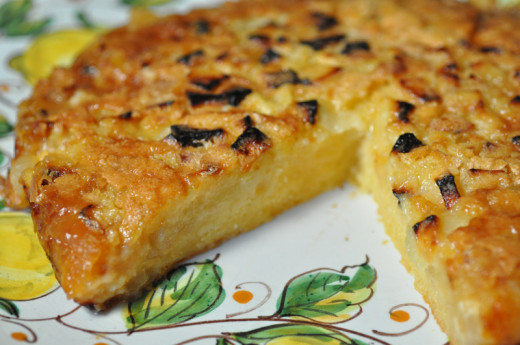
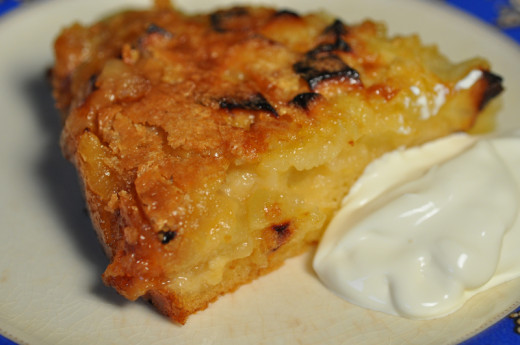
Warm Apple Dessert Cake
This is a really more of a pudding than a cake. You have a cake batter loaded with apple and a sugar-butter topping that forms a crunchy sugar crust on top of a dense yet still light apple cake.
Ingredients:
4 apples (weighing about 550 - 600g)
juice of 1/2 lemon
75 g self-raising flour
1 teaspoon baking powder
125 g caster sugar
6 tablespoons milk
4 tablespoons vegetable oil
2 x 60g eggs, lightly beaten
Topping:
75 g unsalted butter, softened
100 g caster sugar
1/2 teaspoon vanilla extract
1 x 60g egg, beaten
Method:
- Grease and line the base and sides of a deep 20cm tin with greaseproof paper.
- Preheat the oven to 170°C.
- Peel, core and cut the apples into approximately 1 cm dice. Toss in the lemon juice.
- Sift the self-raising flour with the baking powder. Add the caster sugar.
- Beat the milk, vegetable oil and eggs to combine.
- Add the milk mixture to the dry ingredients and whisk until you get a thick smooth batter.
- Put the diced apple into the tin. Pour the batter over the apples.
- Bake for about 50 - 60 minutes until the cake is risen and golden brown.
- Whilst the cake is baking, prepare the topping by beating the softened butter together with the sugar. Beat in the egg and vanilla extract.
- Take the cake out of the oven and pour the topping mixture over, spreading it evenly over the cake.
- Bake for a further 30 minutes.
- Leave the cake to cool to tepid warm in the tin. It will deflate as it cools. Then place a plate over the cake to turn it out. Remove the baking paper and flip the cake over onto the serving platter.
- Serve warm with creme fraiche. You can also dust the top with a little icing sugar if you wish. If you have baked this cake in advance of serving, warm it up for about 20 minutes in a moderate oven.


